To the natural world within the confines of Yellowstone National Park, the nebulous date at the tail end of summer when the vast majority of the human population “migrates” elsewhere must seem a complete mystery. One day, there’s a two-hour-long traffic jam between West Yellowstone and Madison Junction, and the next, the cars are just all gone.
What an inexplicable exodus this must be inside the simple brain of a massive bison that’s spent a summer trying like hell to navigate its home territory, all the while under the constant surveillance of telephoto lenses and the latest and greatest in camera phone tech. But every year, come the Tuesday after Labor Day, a significant portion of the people circulating Yellowstone’s Grand Loop Road simply go away.
In the fall, Yellowstone, for the people who stay — the folks whose kids are grown and don’t have to rush back to Indiana for school, or for the retirees or digital nomads who are no longer on schedules dictated to them by lowly pursuits like jobs or appointments or responsibilities — is a magical place. For fly fishers, in particular, it’s the best time of the year.
Of late, I’ve taken to giving summer in Yellowstone to the tourists. The throngs of people inside the park in July and August are antithetical to any reason I’d want to be in the park to begin with. But come fall, Yellowstone is, once again, a navigable angling paradise for any angler willing to stretch the legs and wander.
And, with respect to the “resident” anglers like me who wait all year for September and October to come around, here are some ideas for anglers looking to experience the best of the park in the wake of the massive human exodus.
The Gibbon River
For anglers entering the park through the west entrance at West Yellowstone, they’ll likely recognize the Gibbon River as one of two sources of the fabled Madison. The Gibbon and the Firehole come together to spawn the Madison at Madison Junction.
But, honestly, the Gibbon is one of the park’s fisheries that can be tough to dial in. Heavily influenced by thermal flows from Norris Geyser Basin, it often flows a bit too warm for dependable trout fishing in the summer. But early in the season — the first couple weeks of June — and then again in the fall, the Gibbon can be one of the best dry-fly fisheries in the park.
From Madison Junction to Gibbon Falls, the river can, at times, feel completely devoid of fish. But, as the weather cools — and water cools with it — resident trout will move up from the Madison. Then, in October, something miraculous happens. Big migratory brown trout from Hebgen Lake swim up the Madison and into the lower Gibbon to spawn.
From about the second week of October until the season closes on the first Sunday in November, the lower Gibbon is for trophy hunters. And, if you’re fishing in the park, you’ll see the tell-tale fly rigs of anglers lining the Madison as you drive into the park from West Yellowstone. Most will sport big indicators and bounce nymphs deep along the bottom in hopes of intercepting a fat Hebgen brown. Others will go right to egg patterns, because Hebgen’s opportunistic rainbows follow the browns into the park to eat roe.
But most anglers can’t resist the scintillating runs and bends of the Madison, and few ever drive as far as the Gibbon. Do yourself a favor. Put blinders on and drive past the guides and their clients on the Madison and head to the Gibbon. You can access the river just above the bridge south of Madison Junction or at the Gibbon Falls Picnic Ground north of the junction. With a little walking, the latter will put you at the base of stunning Gibbon Falls. Here the browns have run a bit farther, but their numbers are good, and a persistent angler stands a great chance of landing a really nice fish or two.
Farther upstream of Gibbon Falls, the river meanders through both Elk Meadows and Gibbon Meadows. The fish here aren’t migratory, but the river is very productive, given its thermal inflows. In the fall, the waters chill a bit, and it’s a great place to walk and stalk for feeding trout among herds of bison and elk.
Still further upstream, above Virginia Cascade, the river becomes a gorgeous little meadow stream. Here, the Gibbon is a key part of the National Park Service’s native fish restoration plan. The NPS has devoted years to removing non-native brook trout and rainbow trout from the upper Gibbon. Now, this stretch of the river is home only to restored populations of native west slope cutthroat trout and native Montana grayling. It’s one of the best places in the park to catch one of these two rare resident fish.
And, in the fall, you’ll do it among bright gold willows and likely under perfectly blue Yellowstone skies. This is what fishing Yellowstone is all about.

The Gardner River
This gorgeous freestone stream starts atop the plateau as a stunning meadow creek in the shadows of Electric Peak, and it flows generally northeast for several miles, tumbling over impassable waterfalls and squeezing through tight canyons until it leaves the park just north of Mammoth Hot Springs. It’s here, too, where it meets the fabled Yellowstone River just east of the town of Gardiner.
For anglers, the Gardner River is likely best in its lower reaches near Mammoth and above the confluence with the Yellowstone. Here, late-summer hoppers hang on into October some years, which makes for pocket-water fishing that can be among the best in the West. Browns, rainbows and even cutthroats moving into the river from Yellowstone offer excellent dry-fly fishing in September.
Unfortunately, in June 2022, record flooding absolutely devastated the Gardner and much of its lower-river access. It’s still possible to reach the river to fish it, but it does require some effort. Post-flood, the National Park Service rerouted traffic away from the river via the Old Gardiner Road. That road, once gravel, is now paved. That means accessing the river will require some walking along the old damaged road that was largely washed out in the flood. It’s still fishable — but it’s not nearly as accessible as it was prior to the flood.
There is some good news, however. The NPS 2024 fishing regulations allow fishing from below Osprey Falls in the park all the way downstream to the confluence with the Yellowstone all year long. On most waters in the park, fishing season ends the first Sunday in November. So, if you can navigate the remnants of the flood and get to the river, your angling opportunities could be excellent and virtually unlimited throughout the year.
Farther up, as the Gardner plunges through Sheepeater Canyon, the river is a bit less predictable and the gradient is significant. Nevertheless, for anglers who are part mountain goat, this stretch of river is largely ignored all summer long. If adventure is on your agenda, this is a hike worth taking.
Finally, near the river’s headwaters, well above Osprey Falls, the Gardner becomes a legit meadow creek. Here, it’s loaded with introduced brook trout — some are perfectly respectful, too — and it’s best accessed at the Indian Creek Campground. For dry fly anglers looking for solitude (and for whom the size of the quarry is of distance importance when compared to scenery and the chance to see some of the park’s iconic wildlife), the upper Gardner is simply wonderful.

The Firehole River
It should come as no surprise that the Firehole is perhaps the best fall fishery in Yellowstone, both in terms of numbers, and, surprisingly to some, for the chance to get into sizable brown trout.
The iconic Bob Jacklin, when asked about the Firehole, will go on and on about its hatches and the sheer numbers of trout that call the river home when the waters cool off in the fall. And he’s right – the bug life must be seen to be believed. In the summer, most Firehole trout retreat into the river’s tributaries to escape the warm water that comes thanks to thermal inflows and warm summer air temperatures. These fish return to the river after it chills in the fall, when there may be more trout in the Firehole than in any other river in the park.
Most fly fishers approach the Firehole from any access above Firehole Falls all the way upstream to Biscuit Basin with a simple philosophy: “If I play my cards right and I’m on my game, I can catch a lot of fish today.”
And that’s particularly true in the fall. Now, don’t misunderstand, here. There is so much natural food in the water that it’s often very easy to feel as though the river’s trout are ignoring you. A few years back, a buddy of mine from California dropped in, and he and I spent a day on the Firehole in October. We saw fish. Everywhere. And we hooked a lot of fish. But we both felt as though we left a lot of trout in the river. And I think part of that is because the Firehole can demand a lot from anglers — solid drifts with dry flies and the perfect hookset with soft-hackles are prerequisites. And it pays to visit one of the fly shops in West Yellowstone before you hit the river — on the Firehole, the right flies matter.
And, yet, there are those days on the river when everything seems to go just right. Yes, for much of its course through the park, the Firehole is a roadside fishery. But it’s also very easy to get off the beaten path and find solitude — a little walking will take you a long way on the Firehole. And, away from the crowds is where you’ll find the river’s big fish — browns get big in the secluded sections of the river, and 18-inch specimens are becoming more common.
It’s here where you might ditch the size 18 soft hackle or the size 20 Blue-winged Olive and instead tie on a size 8 Woolly Bugger or a heavy Zonker for a swing through deep water. No, you won’t catch any lake-run browns up here on the plateau, but you might stick a 20-incher, and that’s saying something on this river.
But mostly, the Firehole is quintessentially Yellowstone. Here you’ll fish next to gurgling hot springs, steaming geyser vents and bubbling mud pots, and you’ll likely have to cross the river a time or two to avoid herds of bison that frequent the meadows of the river above its confluence with Nez Perce Creek.
The Firehole is an experience. The fishing just makes it more special.
Final word
There are, of course, literally hundreds of excellent fishing destinations within the 2.2 million acres of Yellowstone National Park. And, for wandering anglers, the park can be incredibly productive. This is the time of year when deep-water lake trout move into the shallows to spawn, and when big browns migrate into some of the park’s more accessible waters. The park’s non-native brook trout are in full spawning regalia and just about any accessible fishery is worth a stop if you’re prospecting for trout.
And the backcountry fishing can be just as productive, but shorter days and freezing cold nights make day trips a little tougher to accomplish. For hearty souls who can put a camp on their backs, this won’t matter — and they’ll enjoy the best fishing of them all.
But the message here is simple. When most of the humans leave the park is when most of the anglers ought to show up. Fishing can be wonderful. But it’s still Yellowstone, and it’s still one of the most magical landscapes in the world. The fishing? That’s just a bonus.

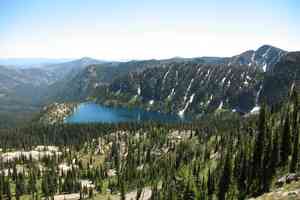
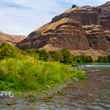

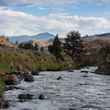
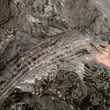
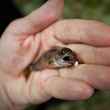
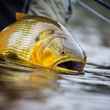
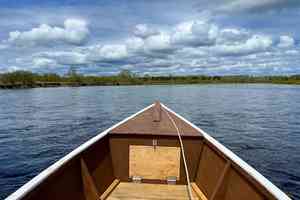
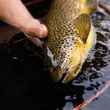
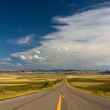
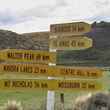
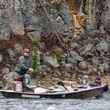
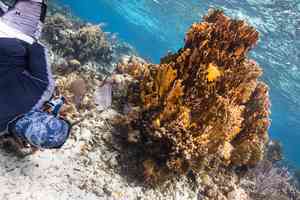
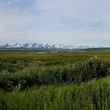
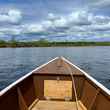
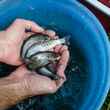
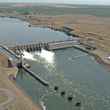

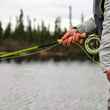

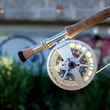

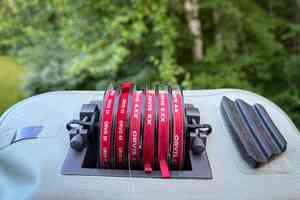
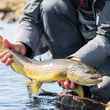
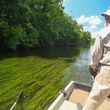
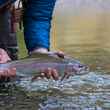
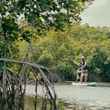
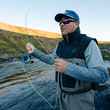
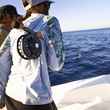
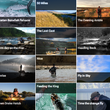
Comments
Anonymous replied on Permalink
Just a couple of suggestions to make the article more accurate...
With the exception of portions of the Madison River and the Gardner River (which starting in 2024 will have stretches that are open to fishing year-round), all park waters now close to fishing at the end of the day on October 31 (as do the interior park roads). This changed a few years ago, from the historic closing on the first Monday in November.
Additionally, the article implies that the Gardner is more-or-less a roadside fishery. It historically was, but since the 2022 flood and the subsequent north entrance re-route, the Gardner is a bit more difficult to access. It's not terribly far from the road in the town of Gardiner, but access is now fairly limited as you move further into the park towards Mammoth, involving an off-trail hike.
Pages